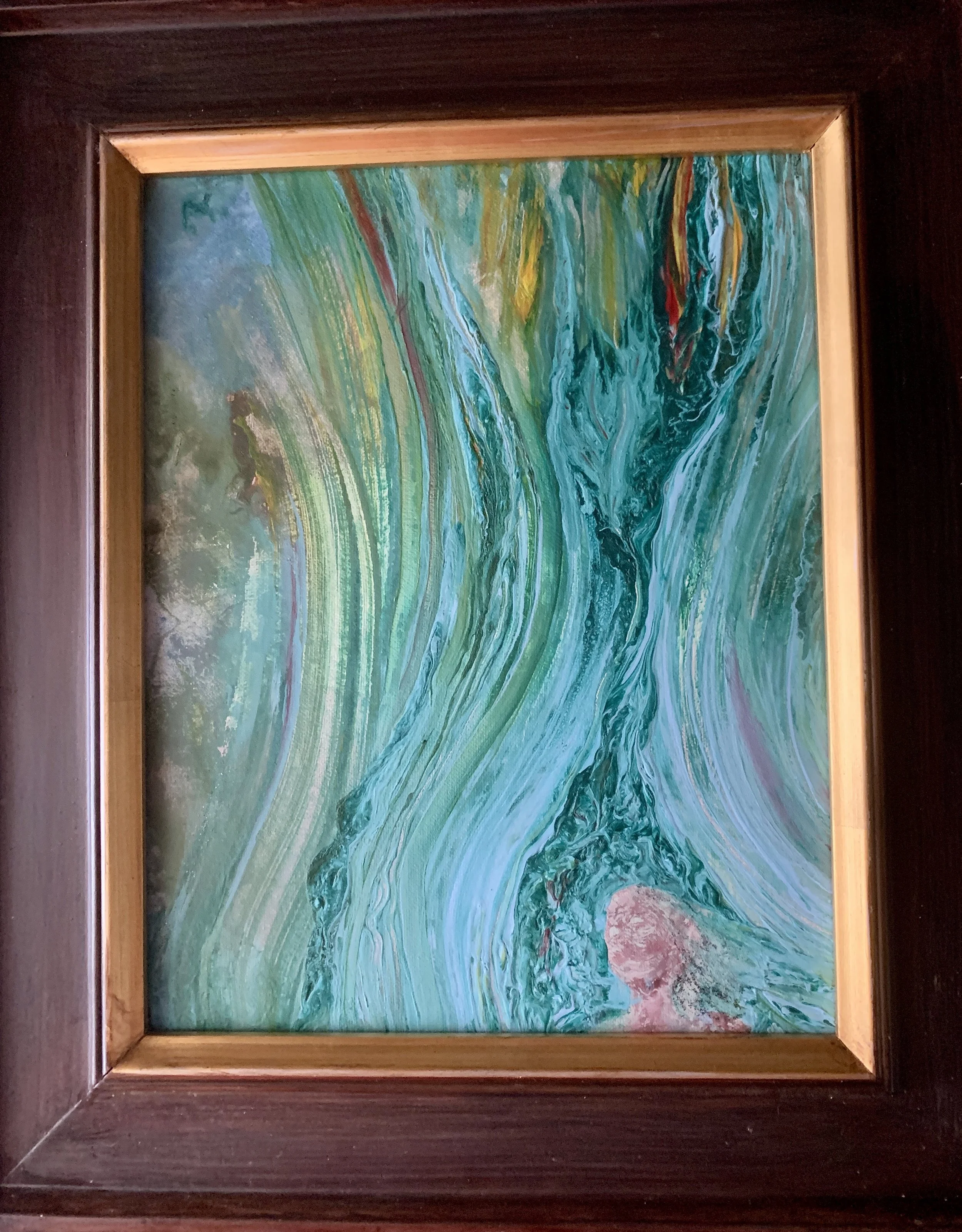STACY BERLIN, PsyD
Stacy A. Berlin, Psy.D is a psychoanalyst and a licensed clinical psychologist practicing in Studio City, Los Angeles, California. She is on the Board of Directors of the International Forum for Psychoanalytic Education, Associate Editor of Psychoanalysis, Self and Context, and Guest Editor of Psychoanalytic Inquiry. She is a Faculty Member and Training and Supervising Analyst at the Institute of Contemporary Psychoanalysis in Los Angeles. In her professional practice, Stacy takes an egalitarian and contextualist approach within a safe relational framework, integrating creativity, play, and humor.
What Takes Root in the Unraveling
(Acrylic on Canvas, 11” x 14”)
I painted this piece the morning after learning that a baby had been born alive, but with such profound brain damage that the doctors recommended only comfort care. I kept thinking: This baby looks fine—and is already dead in the future. It was a thought I couldn’t shake because it pointed to a strange in-between state: the baby was alive, looks fine, but with no expectation of ever walking, talking, or becoming a subject in the way we recognize human aliveness.
This moment stirred old feelings from my analytic work with what André Green named the dead mother complex. In Green’s formulation, the dead mother is not a literal corpse, but a mother who has psychically withdrawn—often due to grief or depression—leaving the child frozen in relation to an internalized absence. The result is a collapse of vitality, a subject structured around a void.
What haunted me in this case was the inversion: a child who may never have had the chance to establish an internal object in the first place. What happens when there is no beginning? When the capacity to symbolize, to relate, to seek meaning is neurologically foreclosed? The baby becomes a living body without emotional presence. Presence without presence.
And yet, this state is not one of pure void. Even in the absence of symbolization, something begins to form—a fragile net of attachments, affects, and projections that bind us to the baby, to the living, to the lost. These entanglements are not linear or clean. They are generative in the way that grief is generative: weaving threads of love, rage, longing, and care into new patterns of relation, new forms of holding what cannot be repaired.
This piece lives in that tangled space—between death and life, presence and absence—where something may still take root.
Reference
André Green, “The Dead Mother,” in On Private Madness (1986)


